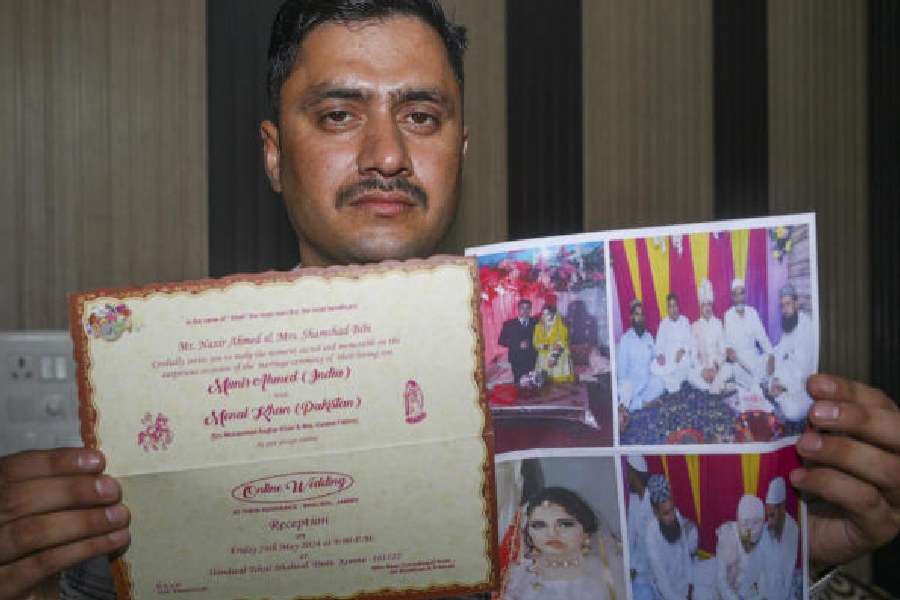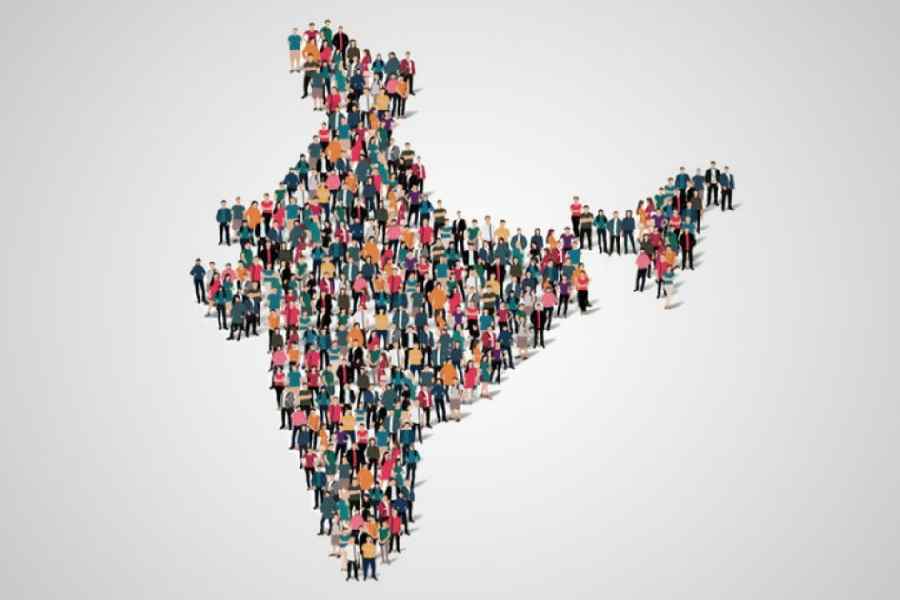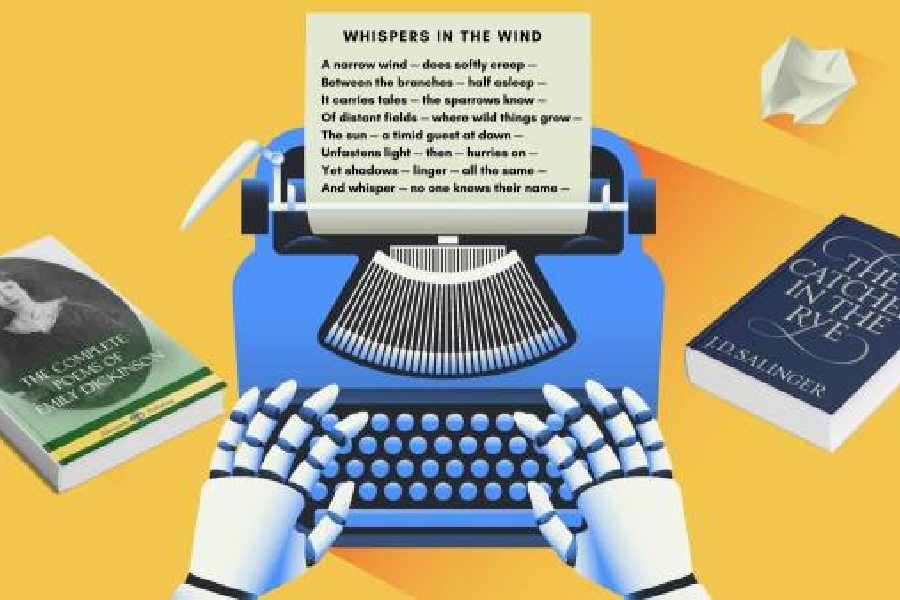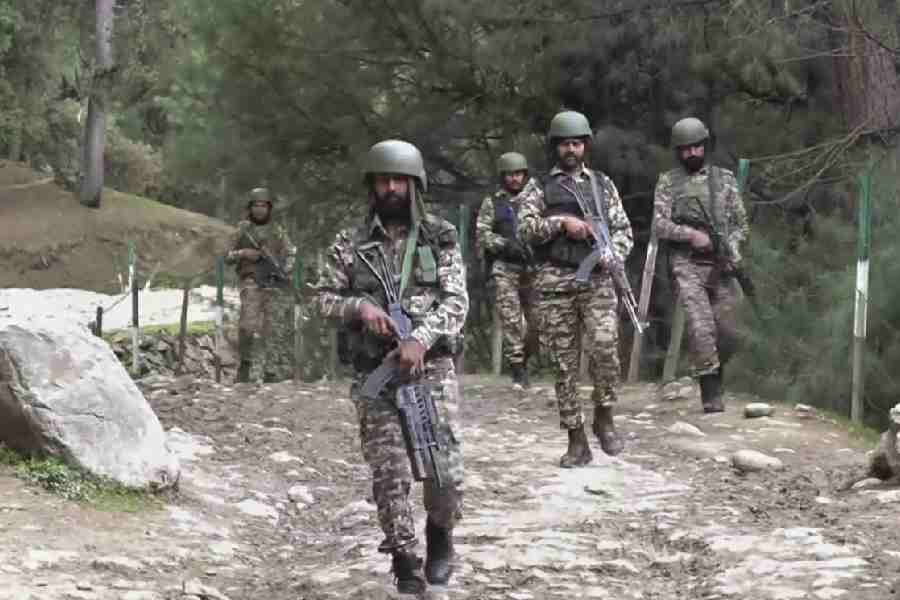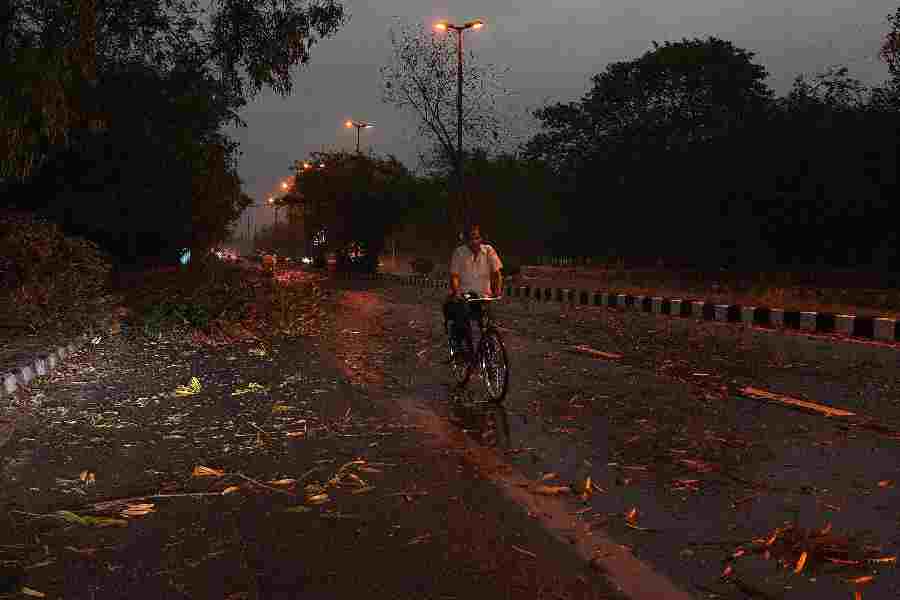 |
| Amartya Sen and Somnath Chatterjee at the launch of the Bengali translation of Identity and Violence at the ICCR on Tuesday evening. Picture by Pabitra Das |
In 1944, a boy of 11 was playing in the garden of his house in Bangladesh when he witnessed a scene of pure horror. Suddenly, a poor Muslim man, grievously stabbed by a fanatic Hindu mob, entered through the gate, pleading for a drink of water.
Kader Mian had made the fatal mistake of coming into the wrong neighbourhood, at a time of intense communal unrest, in the hope of earning some money to feed his starving family. As he collapsed, the little boy laid the dying man’s head on his lap. Later, Kader Mian died in a hospital, where the boy’s father had taken him.
The experience was to haunt, and grow on, the young boy’s imagination for years, until such a time when, as a Nobel-winning economist, he would recount the episode in one of his highly acclaimed books, Identity and Violence — The Illusion of Destiny, first published by W.W. Norton in 2006.
Speaking at the launch of the Bengali translation of the book, brought out by Ananda Publishers, on Tuesday at the ICCR, Amartya Sen recalled Kader Mian’s harrowing end to meditate on some of the most urgent issues of our times. How could one difference, religious in this case, become so important as to take an innocent life? Does this not imply that a sense of identification with a certain group of people not just bridges distances but can also open up dangerous new abysses?
Sen’s book, which has been rendered into Bengali by Bhaswati Chakravorty, takes on the problems and paradoxes of identity, its relationship with economic freedom, as well as with the forces of globalisation. And the answers and arguments that Sen offers in this work are bound to stir debates and discussions.
The book was released by the former communist leader and Lok Sabha speaker, Somnath Chatterjee, who commended the lucid and lively translation. He also pointed out that in spite of the difficult subject and complex argument, Sen makes the book easily accessible to the common reader by giving a human face to history, economics and politics. To illustrate this, Chatterjee, and later the translator herself, read out excerpts from the book.
Sen then explained how personal experiences have often been the bedrock of his activities as an economist. For instance, the great famine of 1943, which devastated Bengal, was to inspire much of his academic work years later. It was curious, said Sen, that although in the 1940s he heard shocking tales of how millions were dying of hunger, people he knew closely, within family and friends, never seemed to have any problem getting food.
It was this disturbing perception of a huge gulf between the classes that paved the way for his path-breaking research later on.
In Identity and Violence, Sen’s humanity and empathy breathe life into his immense erudition. He looks closely at various societies around the world where the pursuit of a single, exclusive identity, based on religion, ethnicity, nationality and so on, has led to violent uprisings. No good can come out of reducing a human being to just one entity shorn of any other attribute. Sen recounted Marx’s famous remark that it is a mistake to see workers as merely workers and nothing more, ignoring everything else about them.
The remedy, Sen suggests in his book, is to cultivate plurality, to inhabit and reconcile multiple identities. Only this spirit of inclusiveness can offer some hope to civilisation and its discontents.





